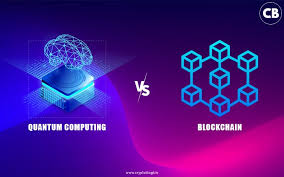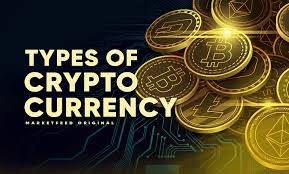How DeFi (Decentralized Finance) is Reshaping Traditional Banking

Introduction
For decades, traditional banks have been the main place where people store, borrow or invest money . These banks act as intermediaries with control over the financial system. But in the past few years, a new technology called decentralized finance (DFI) has begun to change the way people think about money .
DeFi is built on blockchain technology, the same system that powers cryptocurrencies such as Bitcoin and Ethereum. Instead of relying on banks or financial institutions, DeFi lets people carry out financial activities directly with each other using smart contracts—such as lending, borrowing, saving, or trading.
This new system is now shaping traditional banking in ways that are exciting, fast and sometimes even scary . In this article, we will explore what DeFi is, how it works, why it matters, and how it compares to traditional banking.
What is DeFi?
DeFi means decentralized finance . It is a group of applications built on blockchain networks that allow people to use financial services without banks, brokers or intermediaries.
Instead of going to the bank to open an account or applying for a loan with paperwork, you can do all this on the DeFi platform using your smartphone and internet connection.
Some examples of DeFi activities include::
Borrowing without going to the bank .
Earn interest by lending your crypto assets .
Trading cryptocurrencies immediately without waiting for bank approval .
The use of stablecoins (digital currencies linked to the traditional monetary value such as usd) for payments.
Traditional banking vs. Defi
To understand the impact of DeFi, we must compare how traditional banking works .
Feature traditional banking DeFi (decentralized finance)
Control controlled by central authorities such as banks and governments. Blockchain is controlled by protocols and users .
Access limited access (IDs, paperwork, and approval required). Open for anyone with internet and crypto wallet.
Speed transactions can take hours or days. Transactions often occur in minutes or seconds.
Transparency consumers don’t always see how banks use their money. Completely transparent—blockchain records are public .
Cost service fees, hidden charges, and banking costs. Low costs since there are no intermediaries.
Risk safe (insured reserves), but limited opportunities. High risk due to volatility and lack of regulation.
How DeFi works
DeFi mainly uses smart contracts, which are automatic programs stored on blockchains such as Ethereum.
Here’s a simple example:
In traditional finance, if you want a loan, you apply to a bank, and the bank checks your credit history, employment status and financial background before approval.
In DeFi, you do not pass through the bank. Instead, you collect some crypto as some crypto in a smart contract. The smart contract automatically lends to you without asking personal details.
This eliminates the need for trust in banks as the blockchain ensures transparency and the smart contract ensures that the rules are followed .
The main area where DeFi is restructuring traditional banking
1. Lending and borrowing
Banks make money by lending their deposits to others and charging interest. DeFi, however, allows peer-to-peer lending. For example:
You can lend your crypto to platforms like aave or compound.
The platform automatically matches borrowers and lenders .
Both sides earn fair interest without banks taking the largest stake .
It is very fast, open to everyone, and provides better returns to lenders.
2. Payment and money transfer
Traditional international money transfers can take days and include higher fees. DFI addresses this by enabling quick, low-cost transfers around the world using stablecoins.
Example:
Sending کسی 100 to someone in India from the US using the bank can cost فیس 20 in fees and take 2-3 days. But with DeFi, you can transfer the same amount in a few minutes at almost no cost .
3. Investment and production farming
Banks offer fixed deposits and investment plans with low returns. At DFI, people can engage in production farming, where they provide liquidity to DFI ponds and earn high interest or rewards.
For example, if you collect your crypto in the liquidity pool on platforms such as Uniswap, you earn a portion of the trading fee.
It is restructuring how people invest and grow their wealth, offering much higher returns than traditional savings accounts.
4. Decentralized exchanges (DEXs)
In traditional finance, you need brokers or stock exchanges to buy and sell assets. In DeFi, DEXs like Uniswap, PancakeSwap, and SushiSwap allow people to trade cryptocurrencies directly from their wallets without intermediaries.
These exchanges are open 24/7, unlike stock markets that close after working hours .
5. Access for non-bank
More than 1.7 billion people worldwide do not have access to banks. Many of them live in areas where banks are too far away or require too much documentation.
DeFi allows anyone with a smartphone and the internet to open a digital wallet and access financial services. That means financial involvement is growing faster than ever.
The benefits of DeFi on traditional banking
Access-anyone can use DeFi; no credit checks or paperwork.
Transparency-all transactions are on the public blockchain.
Performance-faster transactions with lower fees .
Ownership-you control your money, not banks.
Innovation-new financial products are being created daily .
Risks and challenges in DeFi
Although DeFi looks promising it also comes with challenges:
Volatility: crypto prices can rise and fall quickly.
Security risks: hackers can exploit smart contracts.
No insurance: unlike banks, deposits are not safe .
Complexity: not everyone understands how to use Defi safely.
Regulation issues: governments are still figuring out how to control DeFi.
Real-life examples of DeFi projects
AAVE-a lending platform where consumers can lend and crypto loans.
Uniswap-a decentralized exchange for changing tokens.
MakerDAO-a project that releases stablecoin DAI .
Compound-a DeFi protocol for earning interest on deposits.
These plans show how DeFi is already changing some of the functions of traditional banks.
The future of Defi and traditional banking
DeFi does not mean the end of traditional banks, but it is forcing them to change. Many banks are looking for blockchain technology to sustain this innovation.
Possible future outcomes include::
Partnerships: banks can work with the DeFi platform to offer better services.
Cbdcs (central bank digital currencies): governments can launch their own digital currencies to counter DeFi.
Hybrid model: a mix of traditional banking and decentralized services can emerge.
Result
DeFi is not just a phenomenon; it is a financial revolution. By removing intermediaries and giving people more control over their money, DeFi is restructuring traditional banking in powerful ways.
It provides faster transactions, better investment opportunities and greater access. However, challenges such as security, regulation, and volatility still need to be addressed.
In the future, we may see banks and Defi working together, creating a new kind of financial system that combines traditional banking confidence with blockchain innovation.







